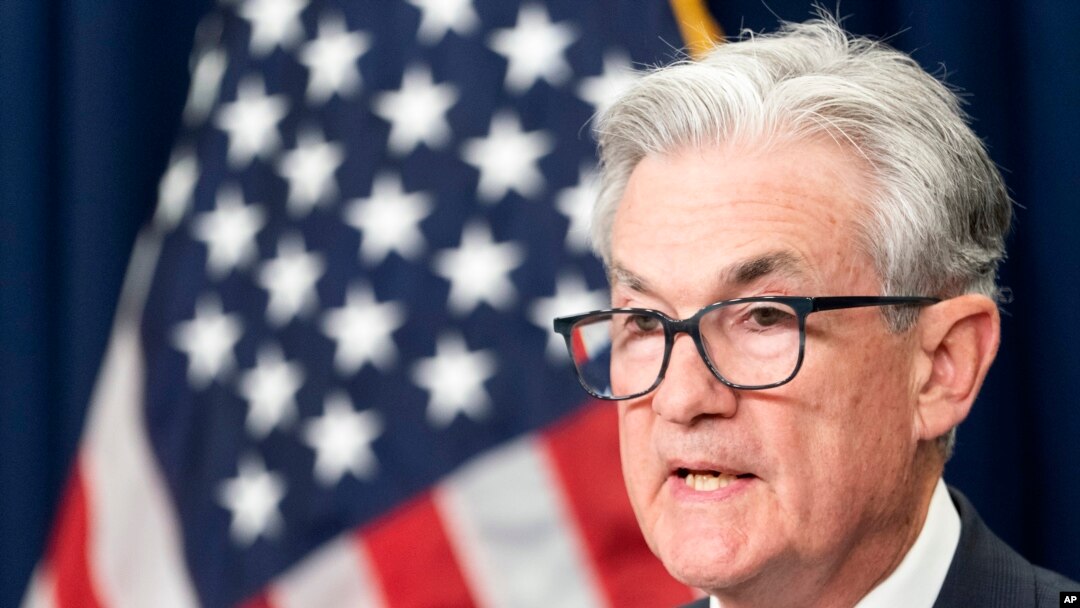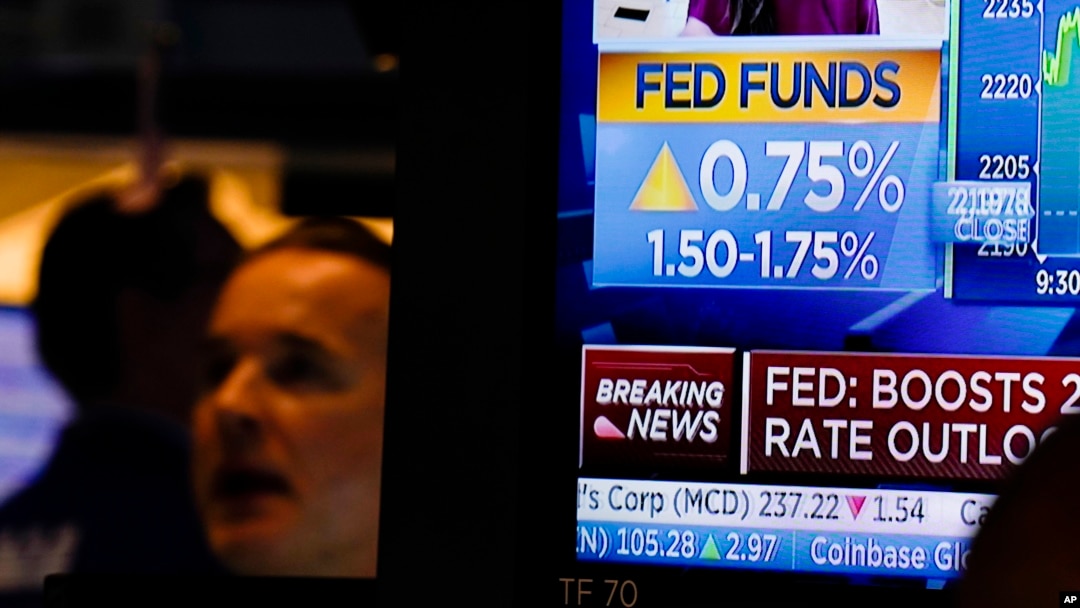Amid a major stock market downturn, sharply rising inflation, and plummeting consumer confidence, the Federal Reserve Board interest rate-setting body decided Wednesday to raise interest rates by three-quarters of 1% in the hope of taming runaway prices.
The decision by the Federal Open Market Committee (FOMC) to increase the target for the federal funds rate to between 1.5% and 1.75% marked the largest single-day increase since 1994. The move illustrates the grave concern among policymakers about inflation, which rose at an annual rate of 8.6% last month, a 40-year high.

Federal Reserve Chairman Jerome Powell speaks during a news conference following an Open Market Committee meeting at the Federal Reserve Board Building, June 15, 2022, in Washington.
In remarks delivered at a press conference after the FOMC meeting, Federal Reserve Board Chair Jerome Powell indicated that more rate hikes are on the horizon, with another a half- or three-quarter-point increase likely in July, and other increases in three further meetings before the end of the year.
“My colleagues and I are acutely aware that high inflation imposes significant hardship, especially on those least able to meet the higher costs of essentials like food, housing and transportation,” Powell said, adding that the Fed is “strongly committed to returning inflation to our 2% objective.”
Trying to cool demand
Inflation drives up the cost of most items people buy on a regular basis, from gasoline to food to clothing. It can also drive up prices on big-ticket items, such as cars, appliances and furniture.
The strategy behind the Fed’s interest rate increases is to cool demand, which can help lower prices.
As interest rates increase, consumers become less likely to borrow money to make large purchases like cars and homes. In recent weeks, for example, the interest rate for a 30-year home mortgage loan in the U.S., which was under 5% in March, has spiked to above 6.7%. It also affects decisions by business owners to make new investments.
The central bank’s task is to cool demand enough to bring inflation back down to its target rate of 2% per year without pushing too far and causing a recession, which could lead to job losses and more economic pain.
‘Behind the curve’
Until last week, the assumption had been that the central bank would raise rates by half a point in this meeting, with other half-point increases in the pipeline later in the year. However, last week’s consumer price index report from the Bureau of Labor Statistics showed that rather than flattening out as expected, inflation had risen, from an 8.3% annualized pace to 8.6%.
The surprise report increased pressure on the central bank, which has been criticized for waiting too long to address rising prices, to take more dramatic action.
“The Fed is behind the curve on inflation and it knows it,” Greg McBride, senior vice president and chief financial analyst for Bankrate.com, told VOA. “Given the ugly inflation report from last week,” he said, a half-point increase would have felt insufficient.
The Fed tries hard not to surprise the financial markets and prefers to signal its rate changes well in advance through “forward guidance” that lets market participants know what to expect.
In his remarks Wednesday, Powell stressed that the circumstances under which the Fed took its decisions on rates was very uncommon, with the Labor Department’s surprising inflation data coming just days before the FOMC was set to meet.
Strong economy
During his remarks, Powell several times stressed that while inflation is high and consumer sentiment is low, the underlying U.S. economy is still strong, with demand for goods and services remaining high.
“We're not seeing a broad slowdown,” he said. “We see job growth slowing, but it's still at quite robust levels. We see the economy slowing a bit, but still, healthy growth levels.”
The Fed chair pushed back against concerns that higher interest rates could damage the economy, pointing out that while rates are rising, they are doing so from a historically low starting point — the Fed held rates at near zero through much of the pandemic and of the last decade.
“There's a lot going on,” Powell said. “There are a lot of flows back and forth, but ultimately, it does appear that the U.S. economy is in a strong position, and well-positioned to deal with higher interest rates.”
Unemployment increase expected
As part of the post-FOMC meeting presentation, the Fed released its Summary of Economic Projections, which contains the committee members’ expectations about a number of economic indicators over the coming years, one of which is the unemployment level.
Employment levels in the U.S. have been one of the major success stories of the pandemic recovery. After spiking to a post-World War II high of 14.7% in April 2020, the jobless rate in the U.S. began to plummet and hit 3.6% in May, just one-tenth of a percent above the level in the months before the pandemic.
Looking forward, though, the members of the FOMC expect that the U.S. unemployment rate will begin rising as interest rates rise, perhaps to above 4% by 2024, with inflation rates down to 2%.
“A 4.1% unemployment rate, with inflation well on its way to 2%, I think that would be a successful outcome,” Powell said.
“We don't seek to put people out of work,” he added. “Of course, we never think too many people are working and fewer people need to have jobs. But we also think that you really cannot have the kind of labor market we want without price stability.”
Recession worries remain
In their efforts to tame inflation, Powell and his colleagues at the Fed have been aiming for what economists characterize as a “soft landing.” That is, a cooling of demand that slows price rises but does not reverse economic growth and push the country into a recession.
Asked about the likelihood of a soft landing on Tuesday, Powell said, “That is our objective, and I do think it's possible.”
However, he said that events such as supply shocks caused by Russia’s invasion of Ukraine and pandemic-related lockdowns in major Chinese manufacturing hubs make predictions difficult.
“Events of the last few months have raised the degree of difficulty and created great challenges,” he said, adding, “There's a much bigger chance now that it will depend on factors that we don't control.”
Despite the Fed chair’s assessment that it remains possible to avoid a recession, others said they were not convinced that getting back to 2% inflation by 2024 is possible any other way.
“It’s hard to see how we get to that level without a recession,” Bankrate’s McBride told VOA.


